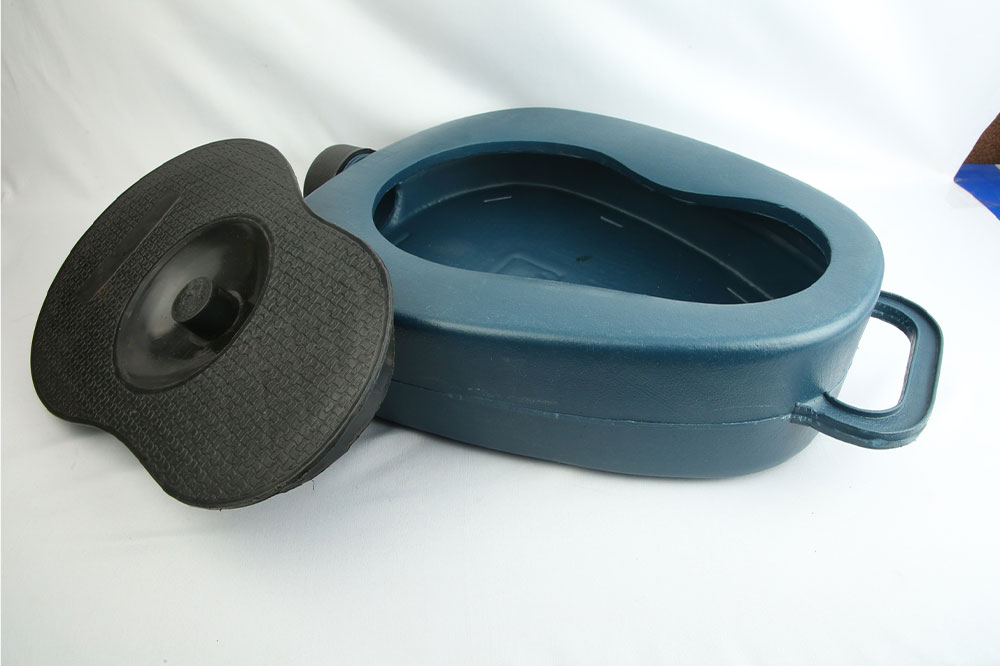
Bedpan – Types, uses, and alternatives
Several patients who cannot get out of bed or are ill require other means to do their business. Here’s where bedpans prove useful as urine or feces collection containers. They are shaped to fit under a person lying or sitting in bed. However, there isn’t just one type of bedpan in the market. One can even pick from options made of different materials. Moreover, each bedpan has its own set of purposes and benefits.
Types of bedpans
Two common types of bedpans are available for the elderly and those who cannot stand up due to injuries. These include regular and fracture bedpans. The first type is larger than the latter. A fracture bedpan has a flat end to make it easy to use for patients with hip fractures, hip replacements, or lower extremity fractures. A bedpan should be available at a local dispensary or from the hospital. One can also look for bedside aid online if one cannot travel outdoors easily. One could also check out bariatric bedpans, which support capacities up to 1200 pounds.
Preparing to use a bedpan
If a caregiver is tasked with helping an individual use the bedpan, they must keep preparing themselves to do the same. First, they must gather essential supplies, such as a basin with warm water, toilet paper, towels, washcloths or wet wipes, and disposable gloves. Following this, they must run warm water over the bedpan and dry it. Metal bedpans retain heat for longer, so the caregiver should check that it isn’t boiling before placing it under the patient. Finally, one can also sprinkle baby powder on the edge of the bedpan to make sliding it under easier.
Getting the pan into position
Before the patient can do their business, it is essential to help them raise their bottoms. To do this, the caregiver must:
- Put on the disposable gloves
- Place a waterproof pad under the patient’s buttocks to prevent spills.
- Raise the head of the bed slightly if permitted by a healthcare expert.
- Support the lower back of the patient with one hand and use the other hand to place the curved edge of the bedpan under the buttocks.
- Raise the head of the bed until the individual is sitting, making urination and bowel movement easier.
- Offer privacy if possible. However, the caregiver should not leave the patient alone if they are weak.
- Lower the head of the bed after the person is done.
- Ask the patient to raise their bottom, support the lower back with one hand, and remove the bedpan.
- Cover the bedpan with a towel and put it on a chair.
The caregiver should follow the same steps for those who cannot raise their buttocks. However, they must roll the person on their side before placing the bedpan against the buttocks. The caregiver must also roll the patient back in place before continuing with the other steps. In addition, they must follow a similar rolling process to remove the bedpan.
Ensuring hygiene
Ensuring cleanliness once the individual is done using the bedpan is a vital aspect. First, the caregiver must roll the person to their side and clean the buttocks with toilet paper. After this, they should use a wet washcloth or a wet wipe to clean the area and use soap and water to clean it thoroughly. The next step requires the caregiver to dry the area. Finally, one must clean female individuals from front to back to maintain hygiene levels. The last step involves drying the area between the individual’s legs and checking the skin for redness or sores. The caregiver should also inform a healthcare provider of any complications.
Bedpan alternatives
While bedpans are a popular choice, they are not the only choice. One can consider using other options like adult diapers at night or other times combined with a rubber sheet on the mattress to manage incontinence. Portable urinals may help one confined to a bed but able to sit or stand to relieve themselves. Those recovering from injuries or surgery could use a portable commode. Furthermore, suppose the patient cannot use a bedpan or diaper or stand up to use a bedside commode. In that case, the healthcare expert may introduce a urinary catheter to the bladder through the urethra to help drain urine.




